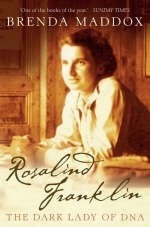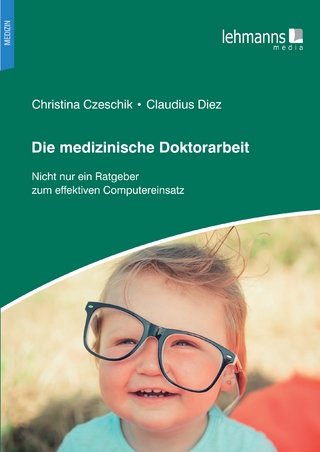
Rosalind Franklin
Seiten
2003
Harpercollins (Verlag)
978-0-00-655211-6 (ISBN)
Harpercollins (Verlag)
978-0-00-655211-6 (ISBN)
The untold story of the woman who helped to make one of humanity’s greatest discoveries – DNA – but who was never given credit for doing so.
‘Our dark lady is leaving us next week.’ On 7 March 1953 Maurice Wilkins of King’s College, London, wrote to Francis Crick at the Cavendish laboratories in Cambridge to say that as soon as his obstructive female colleague was gone from King's, he, Crick, and James Watson, a young American working with Crick, could go full speed ahead with solving the structure of the DNA molecule that lies in every gene. Not long after, the pair whose names will be forever linked announced to the world that they had discovered the secret of life.
But could Crick and Watson have done it without the ‘dark lady’? In two years at King’s, Franklin had made major contributions to the understanding of DNA. She established its existence in two forms, she worked out the position of the phosphorous atoms in its backbone. Most crucially, using X-ray techniques that may have contributed significantly to her later death from cancer at the tragically young age of thirty-seven, she had taken beautiful photographs of the patterns of DNA.
This is the extraordinarily powerful story of Rosalind Franklin, told by one of our greatest biographers; the single-minded young scientist whose contribution to arguably the most significant discovery of all time went unrecognised, elbowed aside in the rush for glory, and who died too young to recover her claim to some of that reputation, a woman who was not the wife of anybody and who is a myth in the making. Like a medieval saint, Franklin looms larger as she recedes in time. She has become a feminist icon, the Sylvia Plath of molecular biology. This will be a full and balanced biography, that will examine Franklin’s abruptness and tempestuousness, her loneliness and her relationships, the powerful family from which she sprang and the uniqueness of the work in which she was engaged. It is a vivid portrait, in sum, of a gifted young woman drawn against a background of women’s education, Anglo-Jewry and the greatest scientific discovery of the century.
‘Our dark lady is leaving us next week.’ On 7 March 1953 Maurice Wilkins of King’s College, London, wrote to Francis Crick at the Cavendish laboratories in Cambridge to say that as soon as his obstructive female colleague was gone from King's, he, Crick, and James Watson, a young American working with Crick, could go full speed ahead with solving the structure of the DNA molecule that lies in every gene. Not long after, the pair whose names will be forever linked announced to the world that they had discovered the secret of life.
But could Crick and Watson have done it without the ‘dark lady’? In two years at King’s, Franklin had made major contributions to the understanding of DNA. She established its existence in two forms, she worked out the position of the phosphorous atoms in its backbone. Most crucially, using X-ray techniques that may have contributed significantly to her later death from cancer at the tragically young age of thirty-seven, she had taken beautiful photographs of the patterns of DNA.
This is the extraordinarily powerful story of Rosalind Franklin, told by one of our greatest biographers; the single-minded young scientist whose contribution to arguably the most significant discovery of all time went unrecognised, elbowed aside in the rush for glory, and who died too young to recover her claim to some of that reputation, a woman who was not the wife of anybody and who is a myth in the making. Like a medieval saint, Franklin looms larger as she recedes in time. She has become a feminist icon, the Sylvia Plath of molecular biology. This will be a full and balanced biography, that will examine Franklin’s abruptness and tempestuousness, her loneliness and her relationships, the powerful family from which she sprang and the uniqueness of the work in which she was engaged. It is a vivid portrait, in sum, of a gifted young woman drawn against a background of women’s education, Anglo-Jewry and the greatest scientific discovery of the century.
Brenda Maddox graduated from Harvard and has written several biographies of Elizabeth Taylor, D.H.Lawrence, Nora Joyce and W.B. Yeats. She has two children, and is married to the editor emeritus of Nature Sir John Maddox; she is a past chairman of the Association of British Science Writers and former judge of science writing in competitions such as that of the Committee for Public Understanding of Science.
| Erscheint lt. Verlag | 7.4.2003 |
|---|---|
| Verlagsort | London |
| Sprache | englisch |
| Maße | 129 x 198 mm |
| Gewicht | 290 g |
| Themenwelt | Literatur ► Biografien / Erfahrungsberichte |
| Sachbuch/Ratgeber ► Natur / Technik | |
| Informatik ► Weitere Themen ► Bioinformatik | |
| Naturwissenschaften ► Biologie ► Genetik / Molekularbiologie | |
| ISBN-10 | 0-00-655211-0 / 0006552110 |
| ISBN-13 | 978-0-00-655211-6 / 9780006552116 |
| Zustand | Neuware |
| Haben Sie eine Frage zum Produkt? |
Mehr entdecken
aus dem Bereich
aus dem Bereich
Grundlagen, Algorithmen, Anwendungen
Buch | Hardcover (2022)
Wiley-VCH (Verlag)
79,90 €
Nicht nur ein Ratgeber zum effektiven Computereinsatz
Buch | Softcover (2021)
Lehmanns Media (Verlag)
14,95 €


